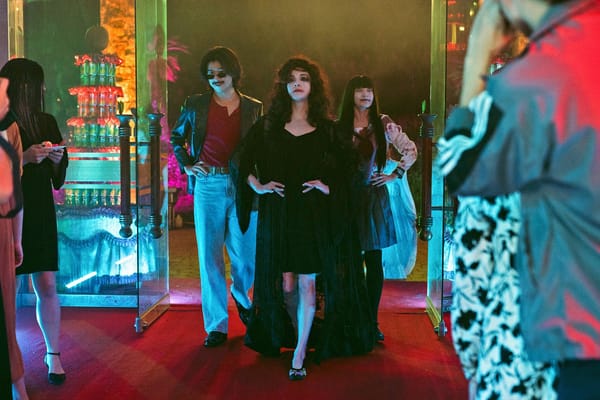Drowned Family

Describing itself as “a 67-minute true crime bathtub fantasia”, Three Crows Theatre’s production of THE DROWNING GIRLS is fast and surprisingly funny, no small feat given the grim subject matter. Written in the late 90s by the Canadian trio of Beth Graham, Charlie Tomlinson, and Daniela Vlaskalic, THE DROWNING GIRLS tells the true story of three English women killed by George Joseph Smith. The real-life cases were fodder for the Edwardian press at the time, as Smith would marry women under assumed names, take out life insurance policies on his new wives, and then drown them in a bathtub. Daniel King’s production of the play is fast and surprisingly funny, a shining example of dark comedy’s value in exploring the awful.
Alice, Margaret, and Bessie – the titular brides – recount their love stories and eventual demises to the audience in a bare space, with only a ladder and a bathtub as set dressing. As played by Lindsey Zanatta, Diane Sinitch, and Three Crows artistic director Selena Lopez, respectively, the women eagerly share their story from beyond the grave. Despite the heaviness of it all, their performances are playful as they transform into concerned landladies, disapproving parents, and coked-up insurance hucksters. King’s direction infuses the storytelling with dance and clown, drawing out the specificity of each character. The performers’ physicalities are at their most effective when Sanchez, Zanatta, and Sinitch transform into Smith: they all assume the same exaggerated pose, firmly planting themselves and creating a foreboding presence.
Graham, Tomlinson, and Vlaskalic’s script is at times unwieldy and confusing, a consequence of the muddled timelines of Smith’s marriages, but Three Crows’ production makes light work of the script’s constraints. Sidestepping the salaciousness of the subject matter and even spoofing the exploitative elements of the true crime genre, the production’s lightness is a huge asset. The greatest compliment, though, is that the goofy nature of the proceedings recedes when Smith’s victims they recount their abuse at his hands and the haunting circumstances of his murders.
The three women are members of an unfortunate sisterhood, and their conversations, suspended in a theatrical afterlife, get the gravity they deserve. The solidarity among these three abused women is powerful, amplified by the play’s closing image. Even if these women didn’t have each other when they were alive, the play creates a space and place for them to comfort each other and commiserate. By depicting the control that men had over Bessie, Alice and Margaret’s lives, THE DROWNING GIRLS powerfully evokes how lonely being a woman in turn-of-the-century England was. Before Smith entered (and ended) their lives, Bessie, Alice, and Margaret were beholden to their fathers, doctors, and bosses. The greatest service that THE DROWNING GIRLS does its characters is allow them to tell their own story, free from the sensationalism of the Edwardian press.
THE DROWNING GIRLS, a brisk retelling of misogynistic atrocity, successfully walks a fine line. This is dark comedy at its finest, simultaneously a good time and a gift to women who lived and died robbed of their voices.




